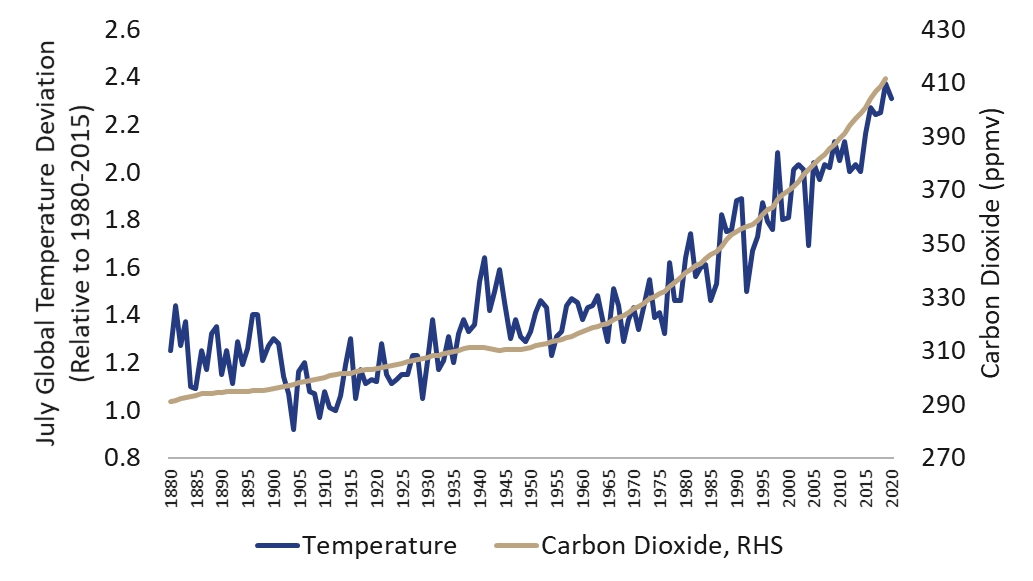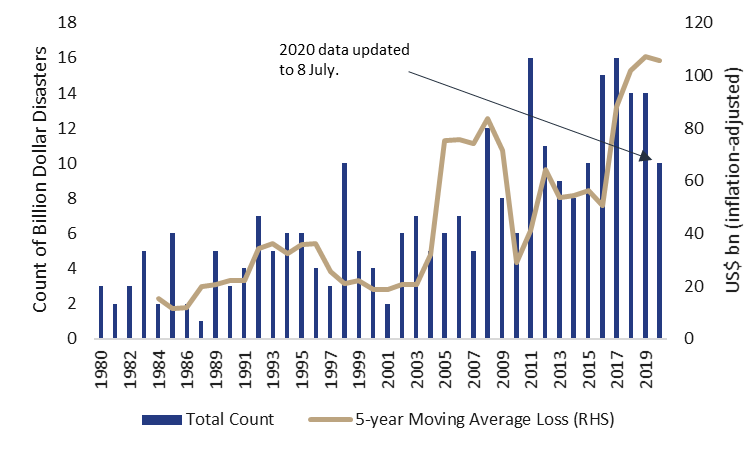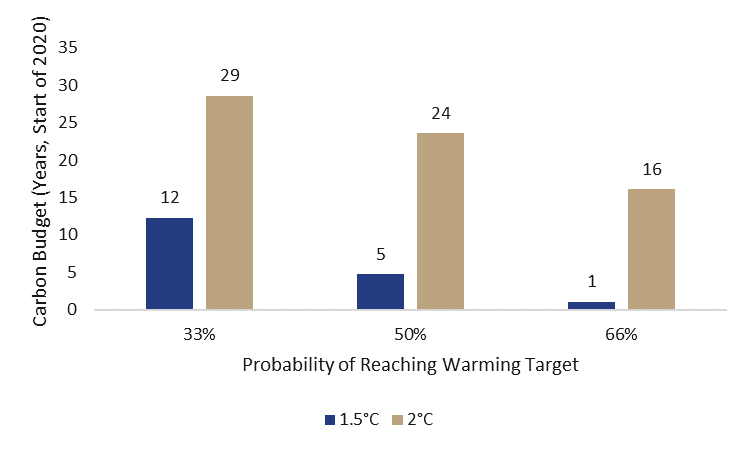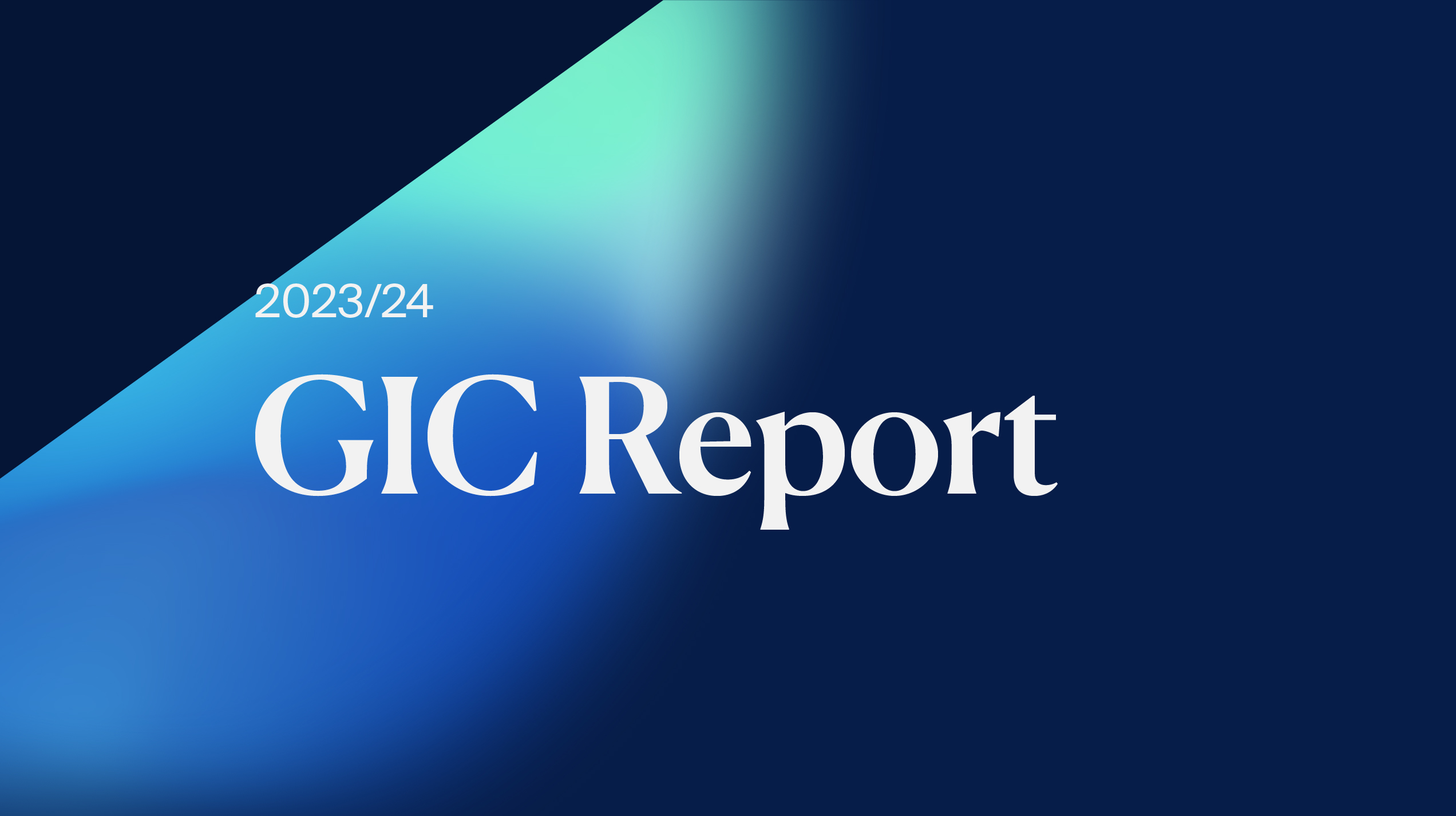The accelerating impact of climate change
The scientific community has reached a broad consensus that (i) the world is indeed warming; and (ii) the primary driver of warming is greenhouse gas emissions (Figure 1). Greenhouse gases (GHG) such as carbon dioxide trap heat from the sun and warm the earth’s surface. The greater the GHG concentration in the environment, the more infrared radiation is prevented from exiting the atmosphere. This causes the earth to heat up. Major contributors to GHG emissions are the energy, utilities, materials and transportation sectors.

Figure 1. Rise in global temperatures has tracked carbon dioxide emissions (Source: NOAA, NASA)
Financial models tend to rely on a plethora of assumed variables that change frequently and cannot be verified ex-ante. However, climate science models are based on well-established physical laws. The accuracy of climate science models in projecting long-term climatic conditions has also improved meaningfully over the years.
The impact of climate change has accelerated in recent years. The past two Julys were the hottest months recorded on Earth since 1880. Today’s rate of sea-level rise is 2½ times that of the 20th century. Ice loss in Antarctica has quadrupled (from 51 gigatons/year between 1992 and 2001, to 199 gigatons/year between 2012 and 2016). Extreme weather events are rising. Since 1980, the number of billion-dollar natural disasters in the US has quadrupled and financial losses arising from them have increased sevenfold (Figure 2).

Figure 2. Count of billion-dollar disasters and losses in the US have accelerated (Source: NOAA)

Figure 3. Number of years for emitting carbon at current pace across warming targets and probabilities in achieving them (Source: Carbon brief, GIC calculations)
Time is running out for policymakers to act. According to climate scientists, for a 50% chance of meeting the Paris Agreement’s global warming target of 2.0°C or less by 2100, 80 years away, we only have about 24 years left of carbon emissions at the current rate (Figure 3). To be clear, this assumes that (i) the rate of carbon emissions plateaus now; and (ii) after 26 years, this rate plunges to zero. Given the rising annual rate of carbon emissions since 1950, and the complexity in re-engineering energy systems and industrial processes globally, it is challenging to achieve (i) and a monumental task to attain (ii).
Additionally, the likelihood of abrupt policy changes increases as we run down our carbon budget.
How does climate change matter for investors?
Climate change affects our investments via two channels: financial materiality and investor flows.
Financially material climate risk factors are physical risks and transition risks. Figure 4 illustrates our framework for assessing financially material climate risk factors.

Figure 4. Framework for climate change risks and opportunities (Source: Futures (Research) Unit, Economics & Investment Strategy, GIC)
Acute physical risks will tangibly damage our assets (e.g. real estate and infrastructure, or those of our investee companies). These risks arise from rising sea levels or a higher frequency of natural disasters like hurricanes, typhoons and wildfires. Insurance provides scant relief as increasing incidences make these risks uninsurable. For example, insurers no longer provide fire insurance for homes in many parts of California.
Chronic physical risks will span multiple decades. The risks include heat stress or water stress that lead to diminishing labour, manufacturing and agricultural productivity over time. Such risks are typically less visible year to year. However, over the long term, their impact can be significant. For example, heat stress affects outdoor activities like construction, as workers rest more frequently to prevent heat injuries. Indoor activities like manufacturing can manage the impact of extreme heat on their workers and machinery with air-conditioning, but this is a resource diversion that could otherwise have been allocated to boost manufacturing productivity. In agriculture, warmer temperatures increase the incidence of pests, and inadequate water supply undermines crop quality and yield.
Policy-related transition risks include disruptive new government policies to combat climate change. For example, a significantly higher carbon tax would cause large and permanent earnings impairment for companies that are high greenhouse gas emitters, such as those involved in oil and gas, metals and mining, materials and transport. These risks can manifest quickly and have dramatic impact on individual companies and/or entire industries.
Technological transition risks are solutions for climate change that present new investment opportunities or disrupt existing industries. For example, increasing innovation and cost deflation in technology has made renewable energy profitable even without government subsidies. This has and will continue to disrupt conventional power utilities running on fossil fuels.
Climate change is a systemic risk affecting all sectors and markets. Investor flows out of carbon-intensive companies will have a significant impact on our investee companies, driven by selling pressure in the short term and a rising cost of capital in the long term. On the other hand, firms that are less carbon-intensive may benefit from these outflows.
How does GIC incorporate climate change into our portfolio?
We take holistic and long-term approach to integrating climate change into our portfolio:
First, in strategic asset allocation, we look at how long-term capital market assumptions are affected by climate change drivers and in different climate change scenarios. These can range from whether global warming is contained below 2°C by the end of the century due to strong climate action by all stakeholders, to a business-as-usual path which ends up with high carbon emissions and high physical risks by the end of the century. External environment assessment and scenario planning analysis are important building blocks in our asset allocation process. It is also an approach aligned with one of GIC’s investment principles to prepare for, and not predict future possible scenarios.
Second, our bottom-up active investment teams are aware and take climate change as an investment issue seriously. They are integrating climate change considerations into their investment processes. For example, our listed equity teams examine the carbon intensity of companies relative to its peer group, and also consider the impact of different carbon prices on the profit margins of companies, which can be used to better inform forward-looking cash flow analysis. Environmental metrics are a good starting point for our analysts to identify risks and conduct further due diligence and engagement with companies. Instead of bluntly divesting from companies with high carbon intensity, we would instead seek to engage and understand if the companies have plans to transit to a lower carbon business model, and will support them in their transition path towards long-term sustainability. This not only builds a richer understanding of future risks in our investment portfolio, but by directly engaging with management on how to operate more sustainably, will also lead to more beneficial outcomes for stakeholders over the long term.
Third, GIC is focusing on green thematic opportunities such as renewable energy, green buildings, sustainable food and agriculture, electric mobility and other emerging technologies that will facilitate a decarbonisation of the global economy. We expect these investments to grow over time, as companies transit to lower carbon intensive and more sustainable business models. We believe that companies with good sustainability practices offer prospects of better risk-adjusted returns over the long term, and that this relationship will strengthen over time.
Sustainability is core to GIC’s mandate and role as a long-term investor managing the reserves of Singapore. Climate change is an important long-term issue that has material impact on the investment portfolio. We adopt a holistic approach to integrate climate change into all levels of our investment processes, and consider both risks and opportunities arising from this long-term theme.






